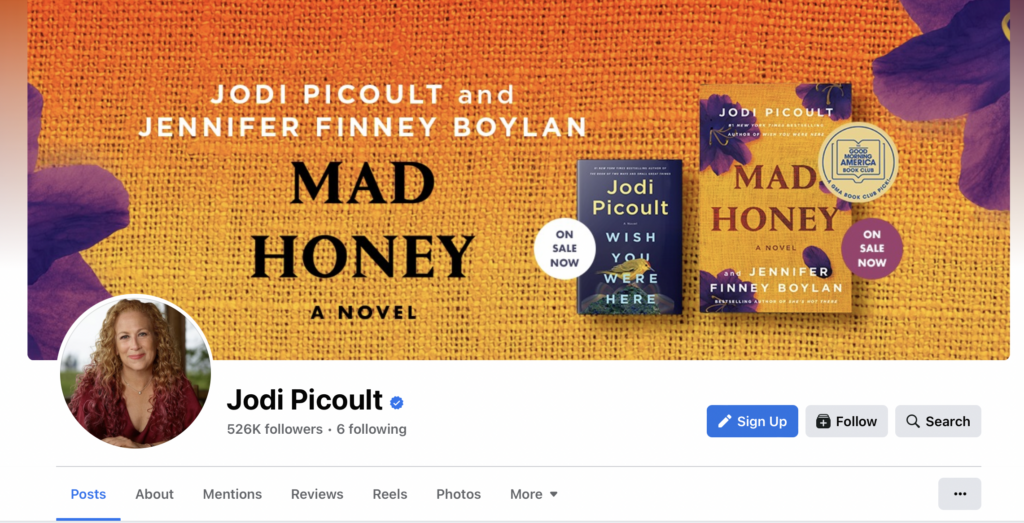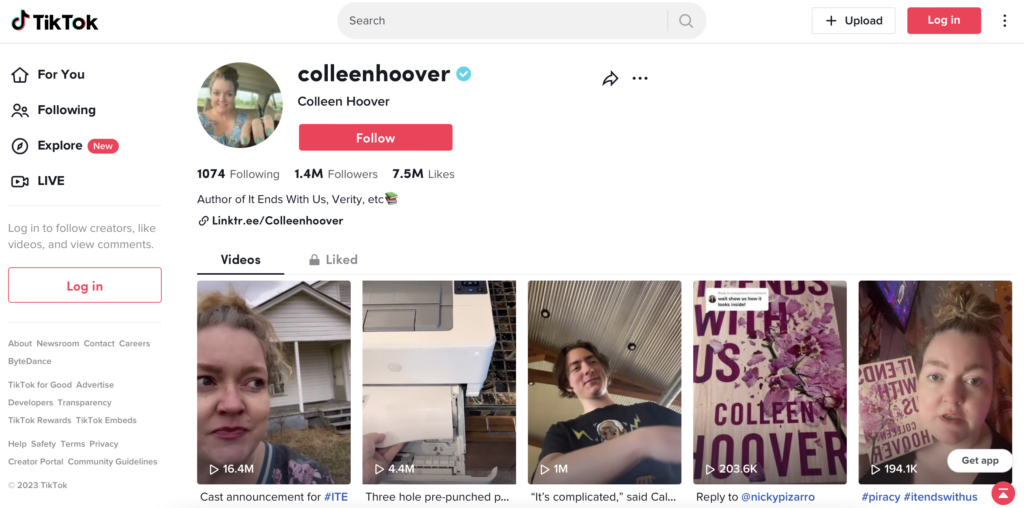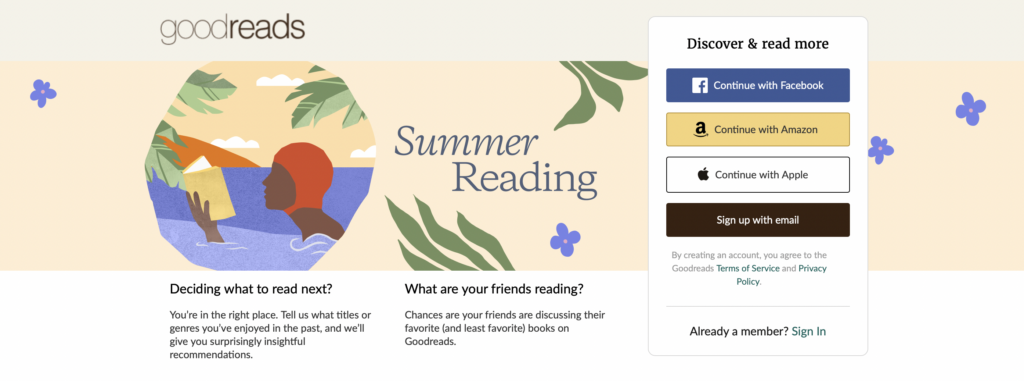AFFILIATE MARKETING
7 Platforms To Grow Your Audience

Authors have a unique need to connect with their audience in the places where they hang out: most notably on social media platforms. This can help grow an author’s audience and boost their engagement and book sales. There are tons of platforms out there that they can use to connect with their target audience. How do they decide which is the best social media for authors?
Instead of reinventing the wheel or trying a little bit of everything, here is what you need to know about the best social media platforms.
Let’s dive right in.
Creating the Right Facebook Page
For many authors, the first and most obvious solution is to choose the social media platform where they engage with most of their friends: Facebook. It’s a flexible platform that allows you to create social media posts that include text, images, or videos.
If your target audience is between the ages of 35 and 44, you’ll want to head straight to Facebook. According to Hootsuite, almost half of all people visit the social media giant multiple times a day.
The question is: what kind of Facebook page should you create?
Perks of Using Your Personal Facebook Page
Some authors want their audience to feel like they can personally connect with them. This is great during the early stages of your author career when you want to really make deep and lasting connections with your audience.
If you don’t mind not having a distinction between your writing business and your personal life, making them the same has benefits: for one, you don’t need to worry about keeping up with multiple pages.
Whatever you post is available not just to family and real-life friends but also to your readers.
Leveraging your personal Facebook profile for your writing career means that your audience will need to “friend” you before they can see your content. This might make things a little tricky as you’ll need to approve each new fan. This is why many people use an author page as part of their social media strategy.
Creating an Author Page

The social network also allows you to create an author page, which is very similar to a business page. Your author page caters to the business of bookselling, allowing you a platform that others can easily access to see upcoming events, details surrounding an upcoming book release, and more.
You can even use it to share book reviews that start rolling in as your audience grows.
Plus, people won’t have to friend you in order to gain access to your page. This makes it much more likely that you will be able to reach your audience without the hands-on method of accepting or denying requests from people that you don’t know in real life.
Utilizing a Facebook Group to Reach a Target Audience
A Facebook group is another way to start leveraging the best social media for authors. You can connect with readers in groups catering to your books’ topic and writing. Authors who can’t find a community or Facebook groups that cater to their niche audience can start their own.
The more engagement you get, the more likely you are to show up in the Facebook algorithm.
This means you’ll be more likely to show up in your audience’s feeds instead of forcing them to come over to your group to view new posts.
Instagram for Photos and Videos

Authors who don’t mind putting themselves in front of the camera will want to consider Meta’s other social media platform: Instagram. Designed for images and videos, you can leverage Instagram as part of a robust social media strategy.
Benefits of a More Visual Platform
This social network allows you to make a more personal connection with your target audience. Take them behind the scenes of your writing process with some of these ideas:
- Take a photo of your workspace.
- Publish a picture with a quote from your latest novel.
- Take a video of your process while you work (similar to a vlog).
With more than 2 billion monthly users on Instagram, adults claim to spend at least a half hour a day on the social media platform. Plus, most users are younger, making this perfect for connecting with those ages 18 to 34.
Tapping into Bookstagram

Bookstagram is a popular offshoot of Instagram, indicating that you have an account dedicated solely to your love of books. To get started on Bookstagram, here are a few ideas that you can leverage as marketing tools:
- Ask readers to share reviews of your writing skills and books.
- Host giveaways for items related to your books or copies of your books.
- Share pictures of what’s on your “to be read” pile.
- Run a promotion specifically for users on Instagram stores.
All you have to do to tap into a very active audience on Instagram is to tag your posts with the hashtag #bookstagram.
Quickly Build a Twitter Following

With so many platforms, Twitter might not be the obvious first choice. However, it’s a great platform to connect with readers and to keep tabs on the publishing industry as a whole.
According to Pew Research, those who take to Twitter tend to be a younger audience with a higher degree of education. If this aligns with your target audience, you must get used to the fast-paced social media giant.
Perks of Keeping it Short and Sweet
Unlike social platforms like Instagram and Facebook, Twitter is designed to give bite-sized nuggets of information. You won’t need to spend hours writing paragraph after paragraph. Instead, a sentence or two is usually all you can fit into the character limit.
This means that you can post multiple times a day without having to spend hours writing fresh content.
While they have expanded their character limit, many people still prefer to keep it short and sweet, in line with the original intention behind Twitter. The writing world is varied and active on this social media platform, and writers will want to take note.
Twitter Etiquette for Building a Following
This social media for writers is a great option because it has a simple etiquette for growing your following. Namely, it would be best if you follow everyone who follows you. This may clutter up your feed, but it’s the polite thing to do to grow your audience and theirs.
You never know when you’ll find fresh content or a partnership with another author platform where you can share reviews, giveaways, and more for each other.
Booktok to Capture New Readers

Much like Instagram has Bookstagram, TikTok now has Booktok. Popular authors like Colleen Hoover leverage this social network to reach more people in younger audiences, but all authors can make good use of it.
How popular is BookTok, and how is it influencing the role of reading in the lives of adults?
Some sources say that people read up to 50 percent more due to the referrals and recommendations they find on BookTok. This social media strategy inspires your desired audience to pick up a copy of your book today.
Making Video Content for Your Work
Unlike YouTube, which generally has focused more on long-form content (we’ll look at this in a minute), TikTok is primarily short videos that are easily consumed at a glance. You can’t upload any videos that are longer than three minutes.
Many writers are hesitant to put themselves in front of the camera, preferring to hide behind their words on the computer screen. But getting more reviews of your books and putting your face out there for people to get to know you could be worth it.
Ideas for TikTok Posts
Not sure what you would talk about on camera for a BookTok post? Here are a few ideas to get you started:
- Quick and easy writing tips
- Background information on your writing process
- A behind-the-scenes look at your latest novel
- Reading reviews from other platforms and readers
- Sharing more about your own reading habits (pass the love along to your favorite authors!)
Goodreads Author Program

Readers often want to know what others say about a book before they’re willing to fork over $10 to $20 for their own copy. One of the most reliable places that they turn to rate and review books is Goodreads.
Readers can show others what they’re reading and what they think of it quickly and easily.
Protect Your Brand by Being Proactive
You don’t necessarily have to register for a Goodreads author account unless you want to maintain some semblance of control over your books. Goodreads is owned by Amazon, meaning that all books available on Amazon should also be found on Goodreads.
This is also a great place to advertise specifically to people looking for new books to read. It’s a great investment in your books instead of Facebook ads spread out to people who may or may not have been in the market for a new read.
YouTube

YouTube is also a form of social media, but it’s often overlooked even though it could be one of the best social media for authors.
You can earn money for advertisements featured on your channel when you reach certain requirements for their YouTube Partner Program by hitting a certain number of hours watched (4,000) and a base number of subscribers (1,000).
Ideas for Long-Form Videos for Authors
Once you get comfortable being on the other side of the camera, you’ll find tons of ideas for video content. Here are a few creative ideas to get you started:
- Writing tips for aspiring writers or self-published authors
- Interviews with other writers in your genre
- A day-in-the-life vlog that shows your writing process
- Story highlights that encourage people to read your whole novel
- Reviews of books that you loved and hated (and why!)
- Affiliate marketing for tools and software that you use in your writing world

Last but not least, you might find it helpful to post regularly on Pinterest. Most people who use the platform are not authors, but using this visual search engine to create a following around your books can be helpful.
You can use Pinterest to post pictures of things that inspire you or things that influence your books. The best part is that most people aren’t looking for engagement from you in Pinterest in the same way that they might come to accept it from other social media for writers. Users rarely leave comments that warrant a reply from you directly.
Sharing Ideas Rather than Personal Images
If you hate putting your face on your work, you might want to consider Pinterest, as you can share visual ideas rather than personal images. For example, you could create a board based on the visuals that you use to create settings and characters for your book.
This gives people a behind-the-scenes look at your process without needing to attach your image to it — unless you want to!
Pinterest for Fiction vs. Nonfiction
Depending on what kind of author you are, you can approach Pinterest users in several different ways. Fiction writers might use social media platforms to post the images that inspire them or even the tools they use to keep their writing on the rails.
You can even use it to keep track of publications that you have all around the web if you happen to be a freelance writer as well as an author.
You can do something similar with non-fiction works. Post articles and research that you found interesting and influenced your writing process.
The truth is that there is no one-size-fits-all solution when it comes to the best social media for authors. Instead, the most important thing is to select a platform you can keep up with and regularly engage with your audience here.
Select one or two of these social media platforms and go all in with them, engaging with your audience and posting content. Experiment to see which platforms work best for your writing career!


















